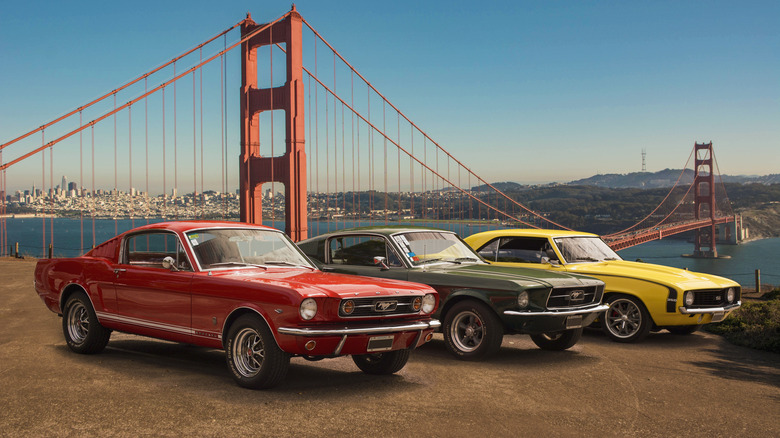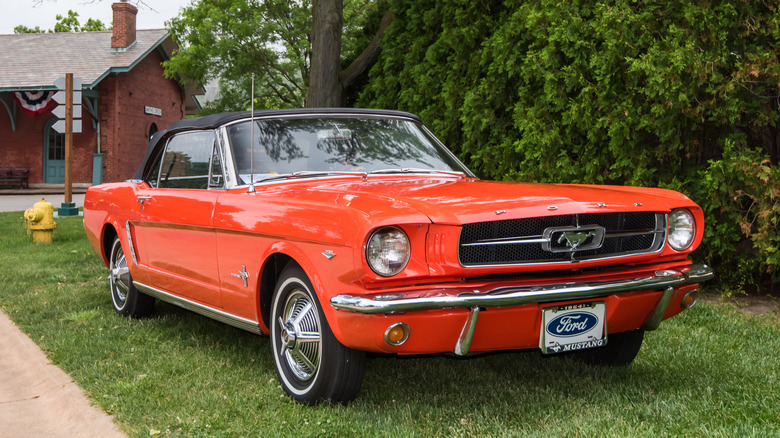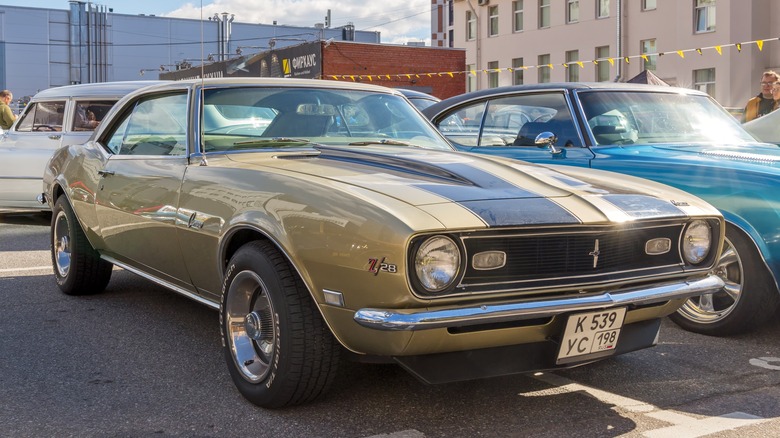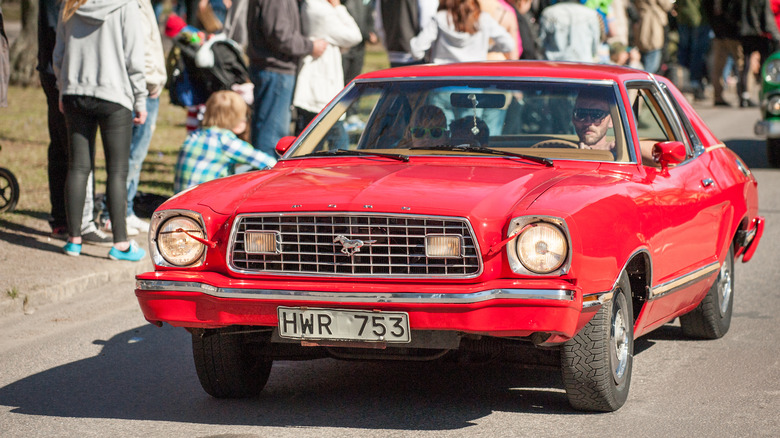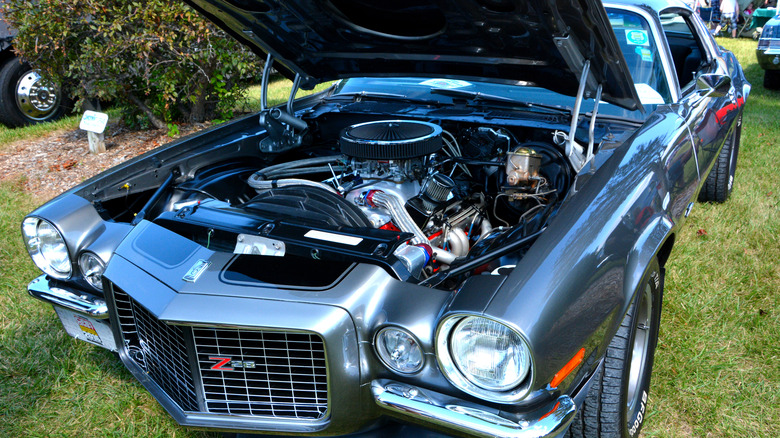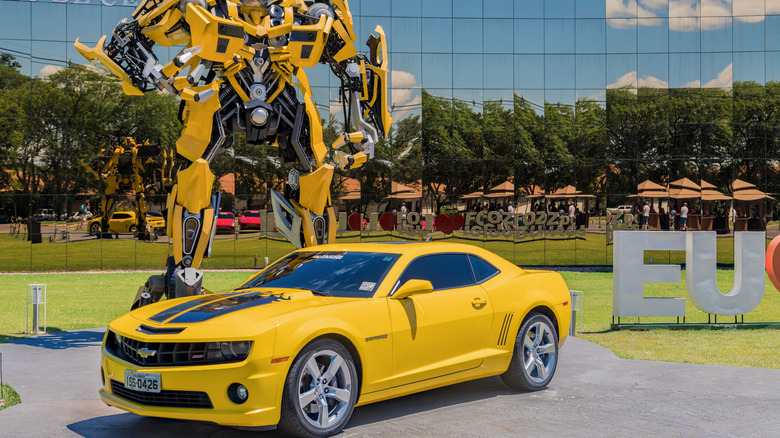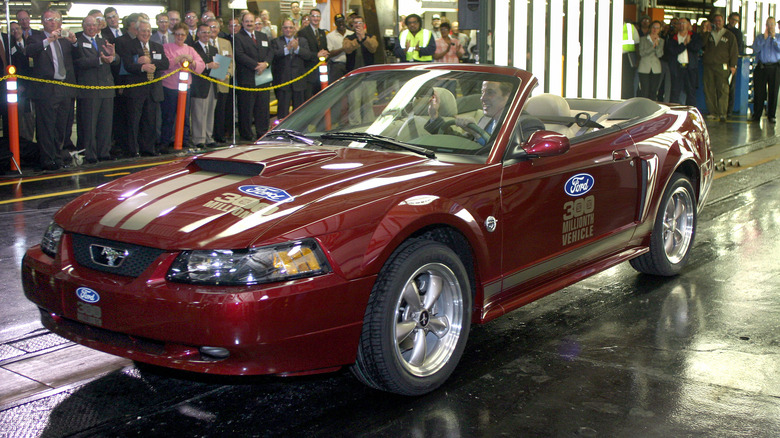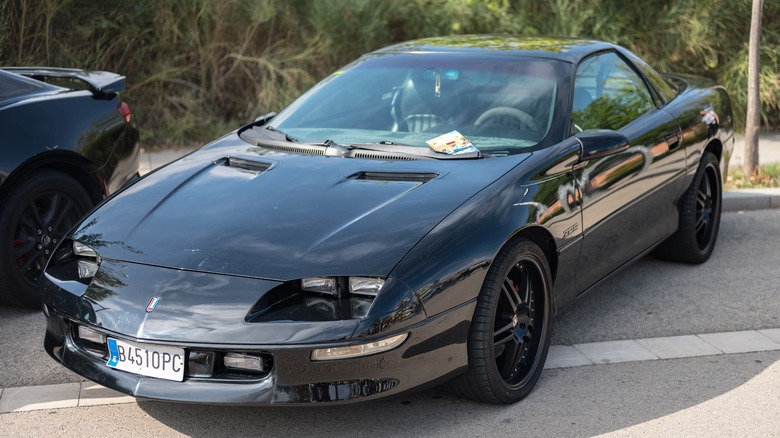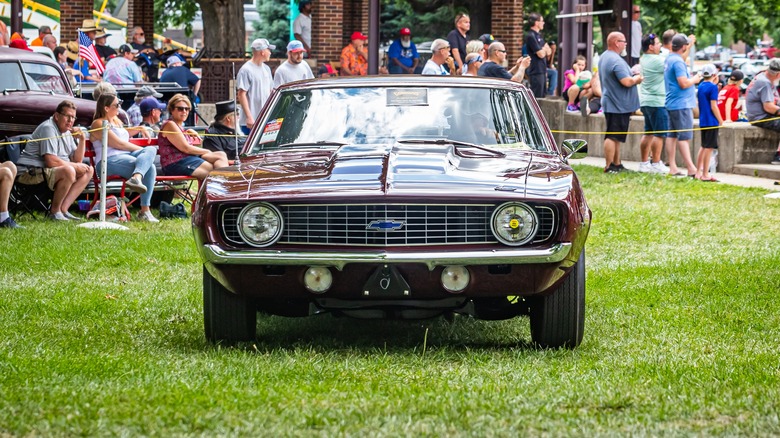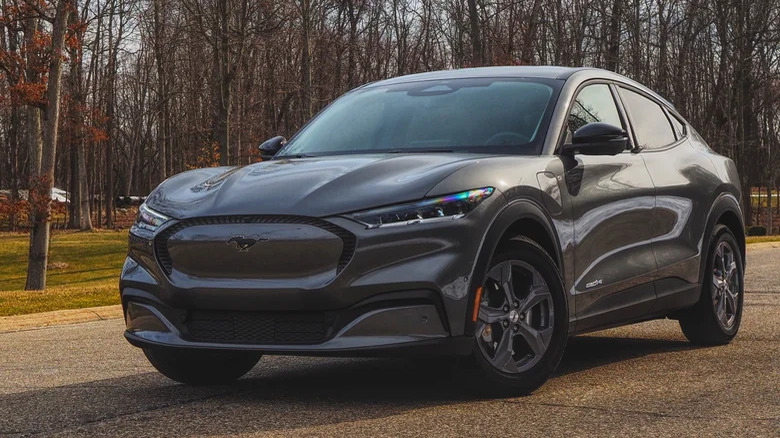Camaro Vs. Mustang: What To Know About The Long-Standing Muscle Car Rivalry
In automotive history, few rivalries are as iconic and enduring as the battle between the Chevrolet Camaro and the Ford Mustang. This feud, spanning over five decades, has not only shaped the muscle car landscape but has become a cultural phenomenon that resonates with enthusiasts around the world. The Camaro and Mustang, born in the mid-1960s, were not just automobiles; they were embodiments of American ingenuity, style, and power. From the racetracks to the silver screen, these two muscle cars have woven a tale of power, performance — and unrelenting competition.
Throughout the years, the Camaro and Mustang have not merely been vehicles; they have been rolling works of art to some, with new generations pushing boundaries of design and performance. From the unmistakable roar of their engines to their sleek bodies, these muscle cars have become cultural symbols, immortalized in movies, TV shows, and the collective consciousness of gearheads. There is much to know about the undying spirit of the Camaro vs. Mustang rivalry, and if you've ever wondered what exactly it is you need to know, there is plenty to learn.
A brief history of the Camaro and Mustang
To truly grasp the essence of the Camaro vs. Mustang rivalry, one must journey back to the mid-1960s when these automotive titans first roared onto the scene. In 1964, Ford unveiled the Mustang, ushering in the pony car era. Designed to cater to the sprouting youth market, the Mustang was revolutionary as a compact, affordable, and stylish alternative to the bulky, performance-focused cars of the time. Its debut at the New York World's Fair created an unprecedented buzz, and the Mustang quickly became an emblem of American freedom and individuality.
In response to the Mustang's immediate success, Chevrolet decided to throw its hat into the ring. The result was the birth of the Camaro in 1966. Named after the French word for "comrade" or "friend," the Camaro aimed to be a worthy companion to its Ford adversary. Chevrolet positioned the Camaro as a versatile, high-performance vehicle, offering a wide array of engines and trim levels to cater to diverse consumer tastes. The Camaro quickly established itself as a formidable competitor, providing drivers with a thrilling alternative to the Mustang's already-established dominance.
The early years of the Camaro and Mustang set the stage for a rivalry that would define an era of American automotive excellence. As these two titans squared off, they not only engaged in a battle for market share but also ignited a passion for performance and style that continues to resonate with car enthusiasts today. In the following sections, we will explore the evolution of their designs, the horsepower wars, and the cultural impact that has elevated the Camaro vs. Mustang rivalry to legendary status.
Origins of the rivalry
The origins of the Camaro vs. Mustang rivalry can be traced back to the mid-1960s, a time when the automotive landscape was undergoing a radical transformation. The rivalry, at its core, wasn't just a battle of metal and horsepower to see who could make the better muscle car. It was more, at the time, a reflection of the intense competition between Ford and Chevrolet for supremacy in the American automotive market. Each new model year saw these two titans pushing the boundaries of design and performance, creating a captivating spectacle for enthusiasts.
As the Camaro and Mustang rolled off the production lines and into dealerships, automotive enthusiasts eagerly took sides. The competition extended beyond the showroom floor and onto racetracks, where these muscle cars battled for supremacy in events like the Trans-Am Series. The rivalry's intensity only fueled the passion of fans, and the Camaro vs. Mustang showdown became a recurring theme in automotive discussions. The friendly yet fierce competition between the two manufacturers not only elevated their respective brands but also enriched the overall automotive landscape.
Design evolution
One of the most compelling aspects of the Camaro vs. Mustang rivalry lies in their evolving designs. From their inaugural models in the 1960s to the sleek and modern iterations of today, the Chevrolet Camaro and the Ford Mustang have undergone transformative changes, reflecting shifts in automotive design trends and consumer preferences.
In the 1960s, the design language of the Camaro and Mustang embodied the spirit of the era. The Ford Mustang, with its long hood, short deck, and distinctive fastback profile, became an instant symbol of youthful exuberance and speed. The Camaro, on the other hand, embraced a more muscular, aggressive aesthetic, signaling Chevrolet's commitment to high-performance driving. The next decade saw changes in automotive design influenced by both performance and regulatory requirements. Both cars were transformed to meet safety and emissions standards, resulting in revised body styles. The sleek lines of the 1960s evolved into more angular, substantial shapes during this era.
The 1980s presented several unique challenges for the automotive industry, including the Camaro and Mustang. The oil crisis and a focus on fuel efficiency influenced design choices, leading to smaller, more aerodynamic profiles. While performance took a temporary hit, the '80s laid the groundwork for technological advancements that would shape future iterations. In the 1990s, the fourth-generation Mustang featured a return to more aggressive, bold styling, while the Camaro, after a brief hiatus, made a triumphant comeback with a sleeker and more modern appearance.
In the 21st century, both the Camaro and Mustang have embraced a modern aesthetic while paying homage to their heritage. The fifth and sixth generations boast aerodynamic efficiency, cutting-edge technology, and a commitment to both performance and comfort. Design elements such as distinctive grilles, sculpted hoods, and sleek profiles continue to capture the imagination of automotive enthusiasts.
Performance
As exciting as the designs of these cars have been, the heart of the Camaro vs. Mustang rivalry beats within the powerful engines and unparalleled performance each model brings to the table. The rivalry sparked a relentless pursuit of horsepower. Each model year saw both manufacturers pushing the limits, striving to outdo the other in a quest for automotive supremacy. The battle for the most potent engine and breathtaking acceleration became a defining feature of the Camaro vs. Mustang narrative.
Throughout the decades, both the Camaro and Mustang introduced iconic models that left an indelible mark on the performance car landscape. Ford's Mustang GT, with its robust V8 engine and unmistakable exhaust note, became a symbol of American muscle. Chevrolet responded with the Camaro SS, a powerhouse that embodied the spirit of high-performance driving.
As the automotive landscape evolved, so did the technology under the hood. Both the Camaro and Mustang embraced innovations such as fuel injection, turbocharging, and advanced suspension systems. These technological advancements enhanced performance while also improving fuel efficiency and the overall driving experience.
In recent years, the Camaro vs. Mustang rivalry has witnessed a shift toward innovative engine technology, including the introduction of hybrid and electric models. Both manufacturers are exploring ways to marry the exhilarating performance of their traditional models with the sustainability demanded by modern consumers. This new chapter in the rivalry brings a dynamic element to the ongoing competition, ensuring its relevance in an era of changing automotive preferences.
Cultural impact
Beyond the roar of engines and the thrill of high-speed pursuits, the Camaro vs. Mustang rivalry has gone beyond the automotive industry, embedding itself deeply in popular culture. These two iconic muscle cars have become symbols.
Both the Camaro and Mustang have graced the silver screen in memorable performances that have immortalized their status as cultural icons. From classic car chase scenes in movies like "Bullitt" featuring the Mustang or less stellar outings such as the "Need for Speed" movie. On the side of the Camaro in movies, it's perhaps most well known as the Autobot "Bumblebee" in the Transformers film series. These cars have become characters in their own right. The on-screen appearances of the Camaro and the Mustang have become legendary, captivating audiences and cementing their place in cinematic history.
In the digital age, the rivalry has found a new battleground on social media platforms. Hashtags like #Camaro vs. #Mustang trend regularly, sparking debates, sharing performance statistics, and showcasing modifications. The digital landscape has amplified the rivalry's reach, connecting fans globally and providing a platform for the ongoing conversation about these legendary muscle cars.
Owning a Camaro or Mustang often extends beyond the act of driving; it becomes a lifestyle choice and a statement of personal identity. Brand loyalty runs deep, with enthusiasts proudly displaying badges, apparel, and accessories that bear the logos of their chosen allegiance. The rivalry has fostered a subculture of gearheads who not only appreciate the mechanical prowess of these cars but also revel in the sense of belonging to a larger community.
Fanbase and community
The Camaro vs. Mustang rivalry has become a phenomenon that has sparked the formation of passionate fanbases and communities. Enthusiasts, drawn together by their love for these iconic muscle cars, have created a vibrant subculture that extends far beyond the showroom floors and racetracks.
Camaro and Mustang enthusiasts have established car clubs that serve as hubs for like-minded individuals to connect, share experiences, and revel in their mutual appreciation for these iconic vehicles. These clubs often organize events, ranging from local meet-ups to large-scale gatherings, providing enthusiasts with opportunities to showcase their cars, exchange tips, and forge lasting friendships.
Annual events dedicated to the Camaro and Mustang serve as pilgrimage sites for fans. These gatherings, featuring car shows, races, and other festivities, attract enthusiasts from around the world. Whether it's the camaraderie of the Mustang Week in Myrtle Beach or the excitement of the Camaro Superfest, these events become an integral part of the fanbase's calendar, offering a chance to immerse themselves in their shared passion.
Sales trends
Of course, the Camaro vs. Mustang rivalry goes past enthusiasts and cultural impact; it is, at the end of the day, a commercial battleground where sales figures and market trends provide a tangible measure of success. Over the decades, both Chevrolet and Ford have navigated the ever-changing automotive landscape, adapting their strategies to try and secure a dominant position in the competitive muscle car market.
The sales histories of the Camaro and Mustang are marked by shifts in consumer preferences and industry dynamics. Both models experienced periods of triumph and challenges, with sales figures reflecting the ebb and flow of their rivalry. The Mustang's early lead in the 1960s was met with a spirited comeback by the Camaro in the late '60s and early '70s. Subsequent decades saw fluctuations in sales as both manufacturers introduced new models and adapted to evolving market demands.
Several factors have influenced the sales trends of the Camaro and Mustang. Design innovation, performance enhancements, and strategic marketing campaigns have played crucial roles in capturing the attention of consumers. Economic conditions, fuel efficiency concerns, and changing regulations have also shaped the market landscape, impacting the sales performance of these iconic muscle cars.
As the automotive industry embraces new technologies and shifts toward electric and hybrid models, the Camaro vs. Mustang rivalry faces a new frontier. Both Chevrolet and Ford are strategically positioning their muscle cars to remain relevant in a rapidly changing market. The quest for market share remains as competitive as ever, with each manufacturer vying for the attention of discerning consumers.
Special editions and limited releases
The Camaro vs. Mustang rivalry not only thrives on performance battles and sales competitions but also on the allure of exclusive and limited-edition models. Both Chevrolet and Ford have deployed special editions and limited releases to captivate enthusiasts, celebrate milestones, and elevate the status of their iconic muscle cars. The results have seen many rare Ford Mustang models and rare Camaros disseminate into the market.
To pay homage to their rich histories, Chevrolet and Ford have released collector's editions that draw inspiration from iconic models of the past. These limited releases often incorporate nostalgic design elements, such as retro badges, color schemes, and interior details, creating a sense of connection between the heritage of the muscle cars and their contemporary counterparts.
The allure of limited-run models lies not only in their enhanced performance but also in their exclusivity. Manufacturers carefully select features, colors, and other specifications to create a unique identity for each limited-run model. The scarcity of these releases adds an extra layer of desirability, with enthusiasts eagerly seeking the opportunity to own a piece of automotive history.
Special editions also serve as a platform for innovation, allowing manufacturers to showcase cutting-edge technologies and design concepts. From advanced suspension systems to special aerodynamic enhancements, these limited releases often preview features that may find their way into future standard models, contributing to the continuous evolution of the Camaro and Mustang.
The future of the rivalry
As the automotive landscape undergoes rapid transformations, the Camaro vs. Mustang rivalry stands at a crossroads, poised to evolve and adapt to the challenges and opportunities that lie ahead. The rivalry has endured for nearly six decades, and indications suggest that this legendary competition will persist. Both Chevrolet and Ford have expressed their commitment to the muscle car segment, assuring enthusiasts that the Camaro and Mustang will remain pivotal players in their respective lineups, despite the rampant popularity of pick-up trucks.
The ongoing shift toward sustainability and electric mobility poses both a unique challenge and a singular opportunity for the Camaro and Mustang. Both manufacturers are exploring ways to integrate electric powertrains without compromising the exhilarating performance that defines these muscle cars. The Mustang Mach-E has remained an impressive offering, if not a little lackluster in the range and charging department. On the Camaro end, there is no electric model yet. But electric Camaro rumors have persisted for years; the future could see a four-door version of the car.
The future of the Camaro vs. Mustang rivalry is also intertwined with technological advancements. Connectivity features, advanced driver-assistance systems, and innovative infotainment options are expected to become standard offerings. These enhancements not only cater to the evolving expectations of tech-savvy consumers, but also contribute to the overall driving experience.
